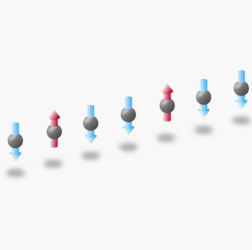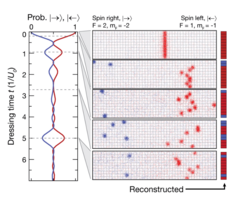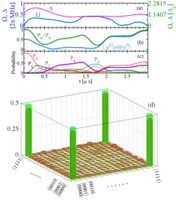
The concept of quantum simulations rests on the idea to use a well controllable quantum system to simulate another system, whose description lies outside the capabilities of any available classical computer. Introduced by Richard Feynman in the early 80s, quantum simulators have now become a reality, owing to the exquisite control over atoms, molecules or ions that is nowadays possible in experiments. Part of our research aims at advancing the scope and capabilities of this approach by exploring new ways of manipulating such synthetic quantum matter with laser light and other external fields. Thereby, we are moreover interested in the properties of the resulting many-body systems in and out of equilibrium.

Coherent many-body quantum dynamics lies at the heart of quantum simulation and quantum computation. Both require coherent evolution in the exponentially large Hilbert space of an interacting many-body system. To date, trapped ions have defined the state of the art in terms of achievable coherence times in interacting spin chains. Here, we establish an alternative platform by reporting on the observation of coherent, fully interaction-driven quantum revivals of the magnetization in Rydberg-dressed Ising spin chains of atoms trapped in an optical lattice. We identify partial many-body revivals at up to about ten times the characteristic time scale set by the interactions. At the same time, single-site-resolved correlation measurements link the magnetization dynamics with inter-spin correlations appearing at different distances during the evolution. These results mark an enabling step towards the implementation of Rydberg atom based quantum annealers, quantum simulations of higher dimensional complex magnetic Hamiltonians, and itinerant long-range interacting quantum matter.

We present optimal control protocols to prepare different many-body quantum states of Rydberg atoms in optical lattices. Specifically, we show how to prepare highly ordered many-body ground states, GHZ states as well as some superposition of symmetric excitation number Fock states, that inherit the translational symmetry from the Hamiltonian, within sufficiently short excitation times minimizing detrimental decoherence effects. For the GHZ states, we propose a two-step detection protocol to experimentally verify the optimal preparation of the target state based only on standard measurement techniques. Realistic experimental constraints and imperfections are taken into account by our optimization procedure making it applicable to ongoing experiments.